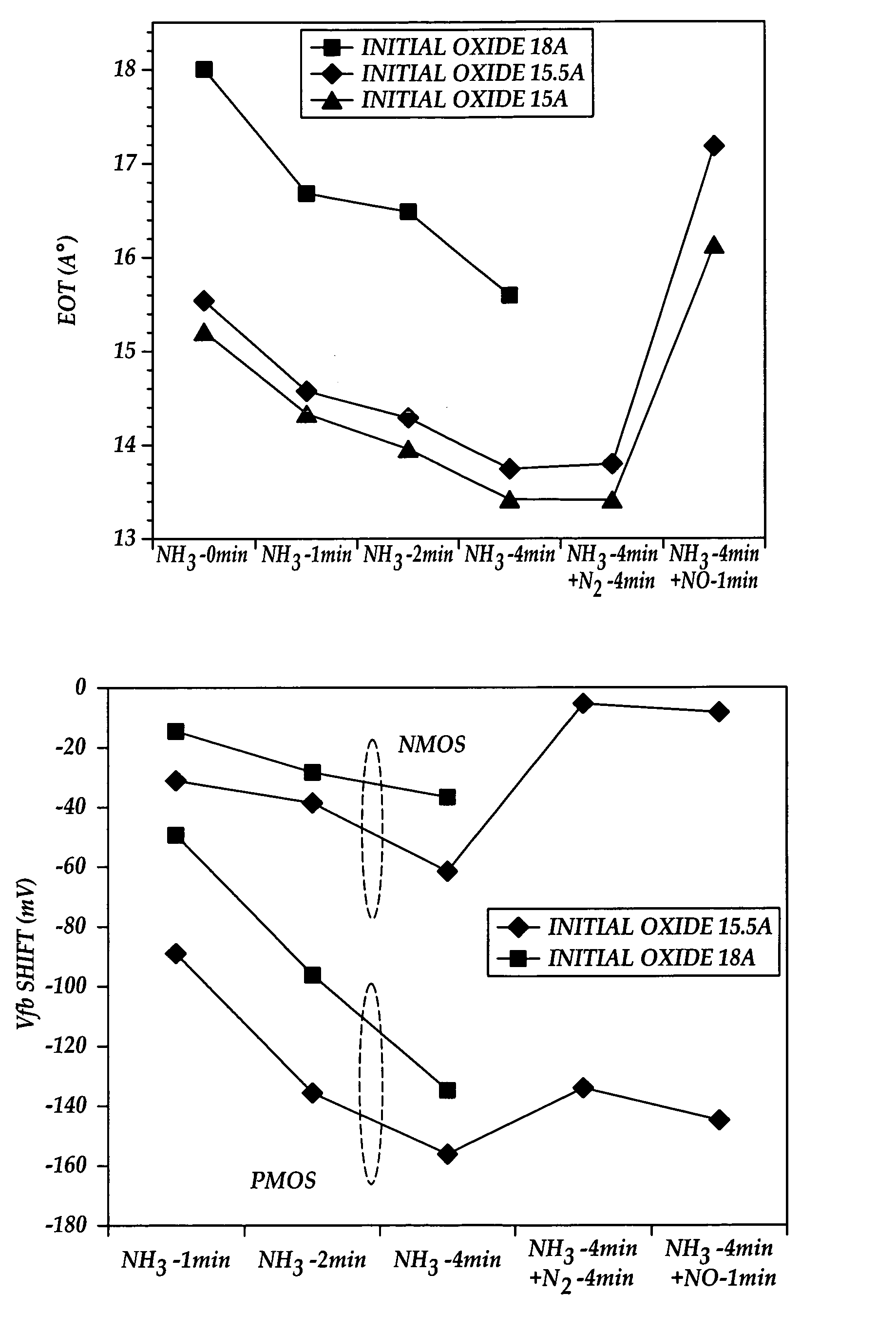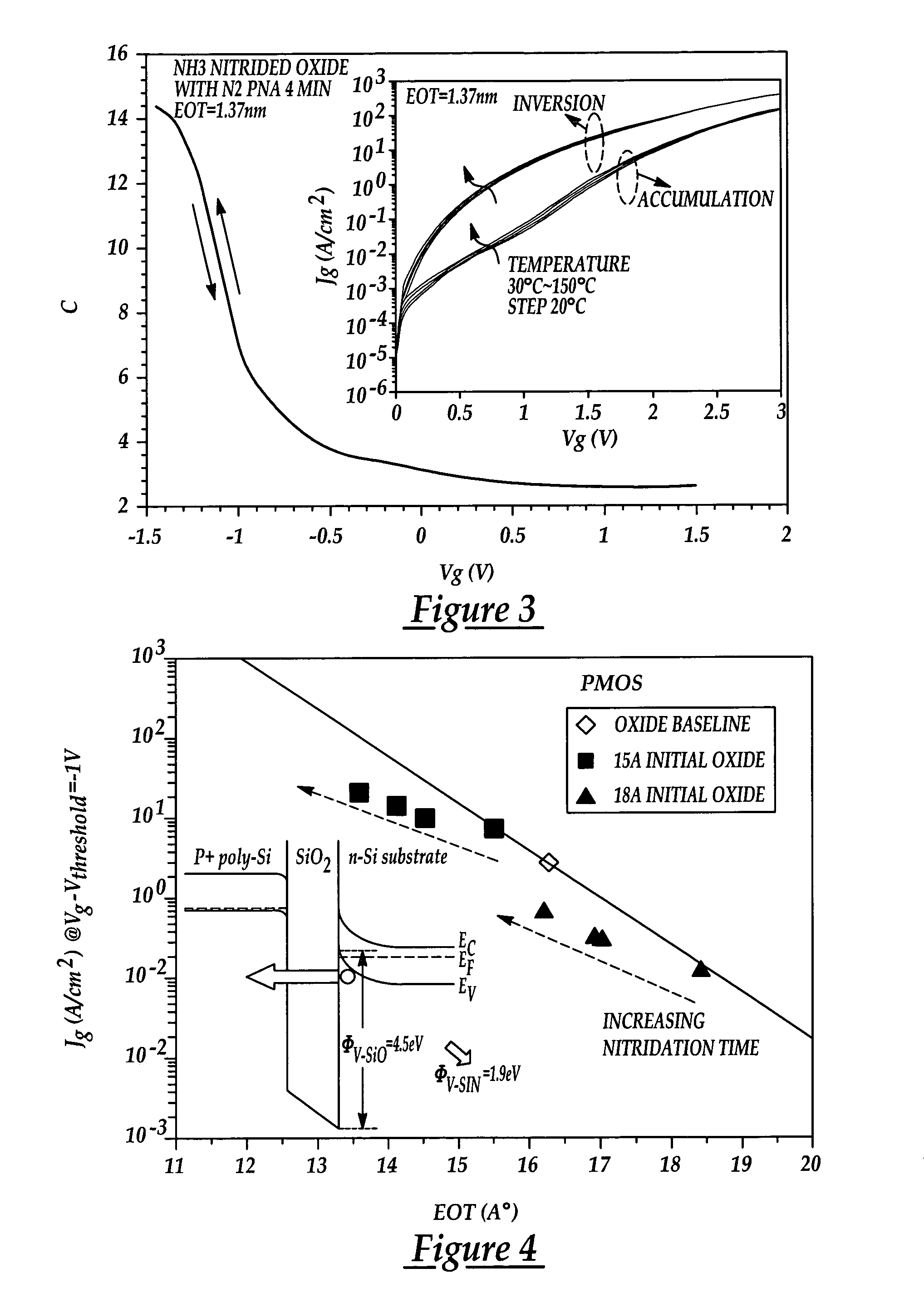Method of making an ultrathin silicon dioxide gate with improved dielectric properties using NH3 nitridation and post-deposition rapid thermal annealing
- Summary
- Abstract
- Description
- Claims
- Application Information
AI Technical Summary
Benefits of technology
Problems solved by technology
Method used
Image
Examples
Embodiment Construction
[0046]In this work, we profoundly investigate the feasibility and characteristics of ultrathin (EOT 13–16 Å) NH3 nitrided oxides. Oxide thickness was thick in the past time, and most of the studies of NH3 nitridation performed on these thick oxides were focused on the reliability improvement accompany with the nitrogen incorporation. No attention was paid on the EOT reduction through nitridation. For thick oxide (˜100 Å), 2–3 Å EOT reduction shows little influence on the characteristics. However, for oxide thickness down to the range of 10–20 Å in direct tunneling region, 2 Å EOT reduction can contribute to one order lower in gate leakage current. Opposite to the N2O nitridation and RPN which will cause an increase in film physical thickness, NH3 nitridation not only effectively introduce the nitrogen into gate oxide but also essentially keep unchanged in physical thickness. This property indicates the promising for NH3 nitridation in oxide equivalent thickness downscaling. The resu...
PUM
 Login to View More
Login to View More Abstract
Description
Claims
Application Information
 Login to View More
Login to View More - R&D
- Intellectual Property
- Life Sciences
- Materials
- Tech Scout
- Unparalleled Data Quality
- Higher Quality Content
- 60% Fewer Hallucinations
Browse by: Latest US Patents, China's latest patents, Technical Efficacy Thesaurus, Application Domain, Technology Topic, Popular Technical Reports.
© 2025 PatSnap. All rights reserved.Legal|Privacy policy|Modern Slavery Act Transparency Statement|Sitemap|About US| Contact US: help@patsnap.com



